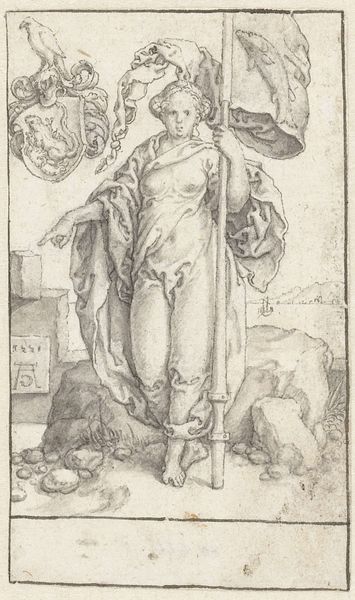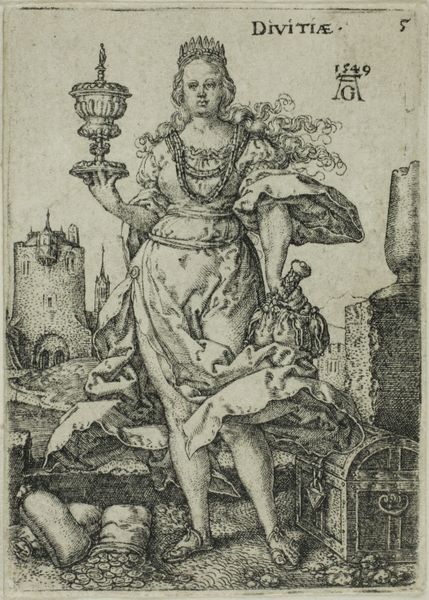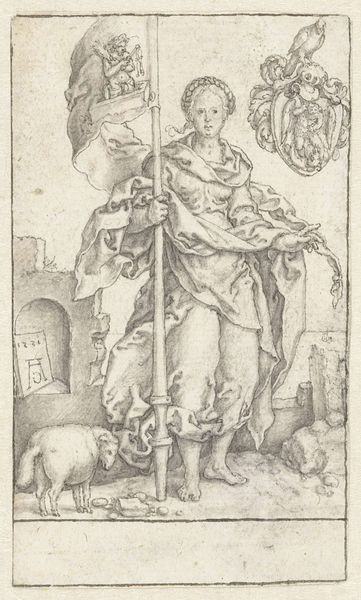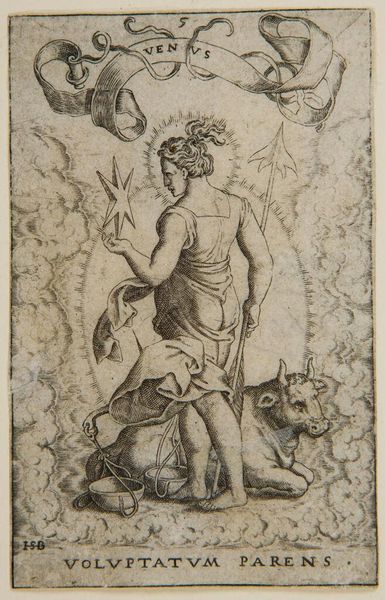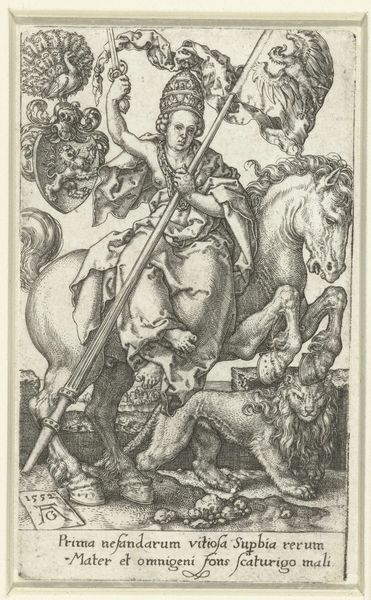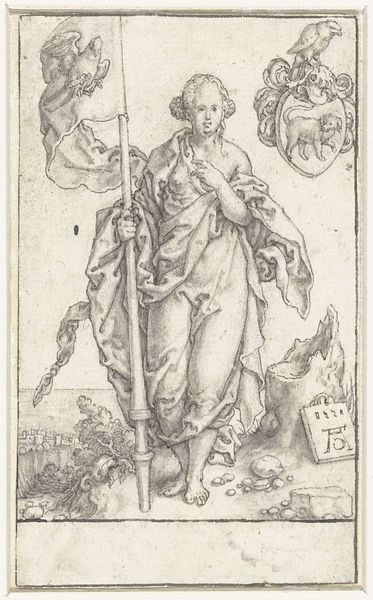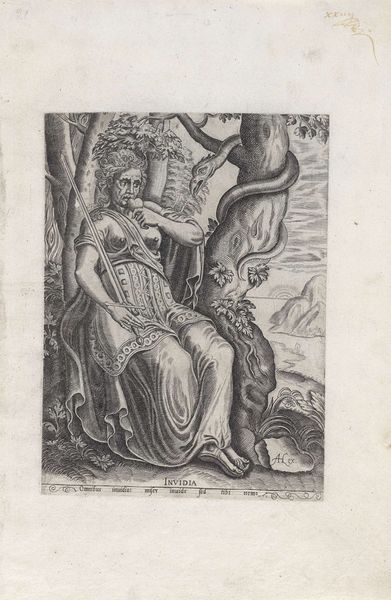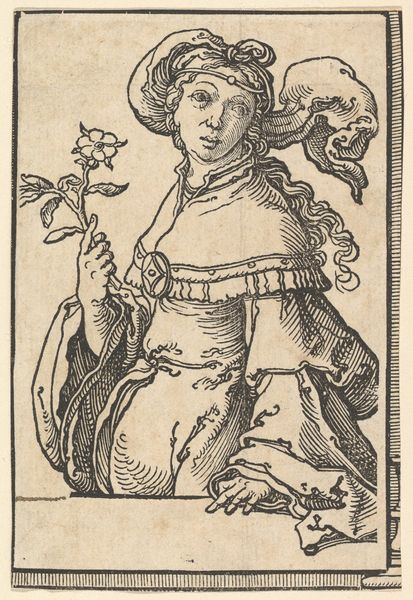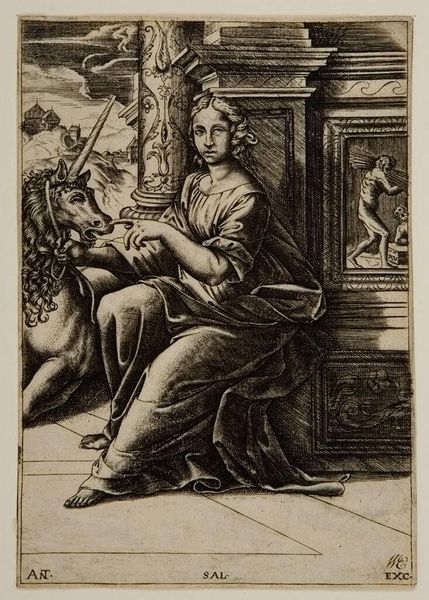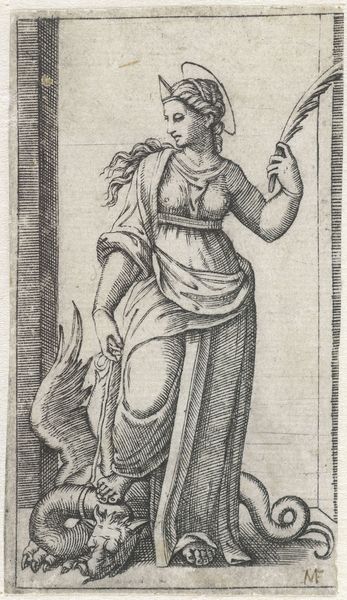
Dimensions: Image: 31 Ã 22 cm (12 3/16 Ã 8 11/16 in.) Sheet: 32 Ã 22 cm (12 5/8 Ã 8 11/16 in.)
Copyright: CC0 1.0
Editor: This is Sebald Beham's "Saint Agnes," a print made sometime in the first half of the 16th century. It has such a captivating, almost otherworldly quality. How does the image connect with the broader cultural context of its time? Curator: Well, consider the Reformation. Beham was a German printmaker associated with the Little Masters, and this piece reflects anxieties about religious iconography. Agnes, with her lamb, is both devotional and...accessible. Does it challenge or reinforce existing power structures? Editor: That's interesting! It's both reverent and strangely human. So, how does this tension play out in the reception of the artwork? Curator: It likely appealed to a diverse audience navigating shifting religious landscapes. The print’s relative accessibility allowed for personal devotion while perhaps skirting overt challenges to established Church authority. Editor: I see. I never considered how political a seemingly simple religious image could be. Curator: Exactly. Art is never created in a vacuum.
Comments
No comments
Be the first to comment and join the conversation on the ultimate creative platform.
